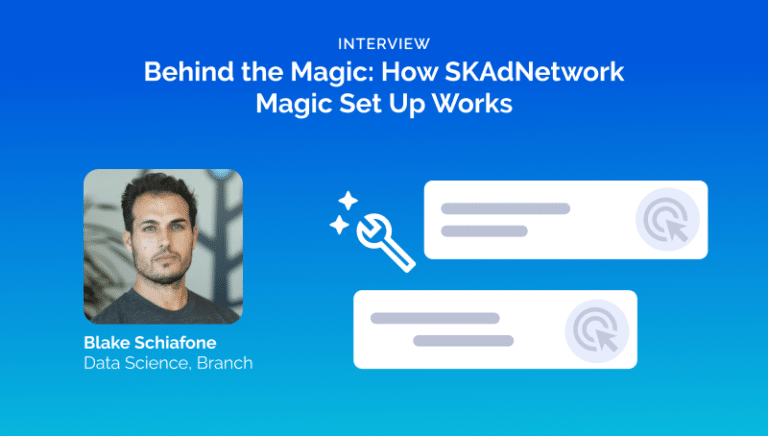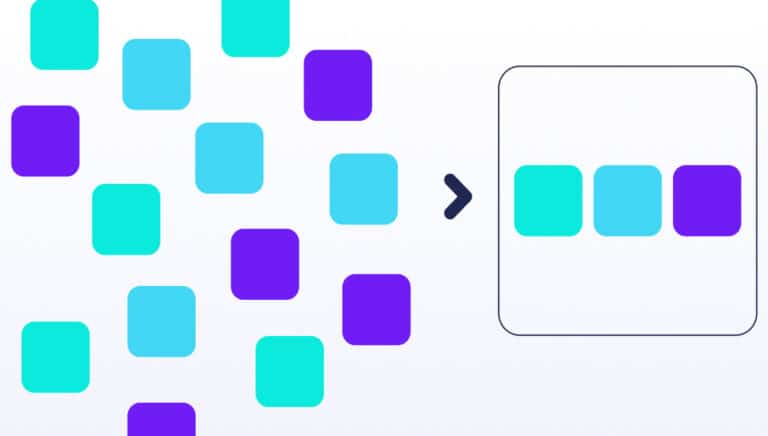What is Identifiers for Advertisers (IDFA)?
IDFA is a unique and anonymous identifier for each iOS device. IDFA helps app developers and marketers understand a user’s interests and behavior so they deliver more targeted content to them. It also helps them measure the success of their campaigns so they can optimize their ad spend.
IDFA stands for “ID (or identifier) for advertisers” and is unique to each iOS device. IDFA is the standard that Apple adopted that allows mobile advertising networks to track users and serve them targeted ads. As of iOS 14, both a publisher and destination app must separately receive permission via Apple’s App Tracking Transparency framework from the user in order to read the IDFA (and other device-level identifiers specified here), making it an exclusively opt-in feature. For strategies on how to increase your user opt-in rates, reference our guide.
Apple’s “plan B” to if and when users decline to have their IDFA read is SKAdNetwork meant to replace the IDFA. SKAdNetwork allows advertisers to track which of their advertising campaigns ultimately led to new users installing their apps or making purchases, but without disclosing much information about what specific ads a user has seen or clicked on.
History of the IDFA
Before the IDFA, Apple allowed developers access to a user’s Unique Device Identifier (UDID), which enabled developers to track a user across multiple apps. Although the UDID provided value in properly tracking advertisements and authenticating across multiple apps, third-party app softwares started harvesting UDIDs into databases and, in some cases, selling them. The U.S. Congress ultimately decided that this violated a person’s right to privacy, and Apple had to restrict app access to a device’s UDID.
To replace the UDID, Apple introduced the IDFA. Users have the ability to turn off access to or reset their IDFA, while the UDID was a permanent device hardware number, and once it was shared, it couldn’t be unshared. These changes allow users to have more control over their data and privacy.
Before iOS 14, advertisers measured the efficacy of their ads by using the IDFA to tie back a user who clicked on an ad and a user who downloaded an app, allowing advertisers to better optimize their campaigns.
In iOS 14 and beyond, apps and ad networks will be able to read a user’s IDFA only if the user gives permission for every new app they visit. This makes mobile marketing and attribution increasingly more difficult.
How was mobile attribution done prior to iOS 14?
Before iOS 14, advertisers measured the efficacy of their ads by using the IDFA to tie back a user who clicked on an ad and a user who downloaded an app, allowing advertisers to better optimize their campaigns. Here’s a typical example of how it worked:
- An app showed an ad with a link embedded behind it. The link could be either from an ad network directly or from a mobile measurement partner (MMP) on behalf of the ad network. Within that link URL was a parameter with the IDFA.
- The user clicked the ad. This set off a network request (typically a chain of redirects routed via the user’s web browser, but not always), during which the ad network or MMP collected the IDFA before redirecting the user to the App Store.
- After download, the ad network or MMP SDK collected the IDFA again and matched the two values to perform attribution.
What changed with the IDFA in iOS 14 and beyond?
The IDFA became obsolete
As of iOS 14, the IDFA is not available to advertisers or ad networks unless users grant permission to both the advertiser app and ad network to read it for every new app the user downloads. The IDFA isn’t technically gone, but because of very low opt-in rates, the IDFA is essentially useless.
When users opt out of IDFA tracking, this diminishes advertisers’ ability to serve personalized and retargeting ads, as well as the ability to accurately attribute their marketing campaigns and understand campaign ROI.
SKAdNetwork replaced the IDFA
Apple’s attribution model for users that opt out of IDFA is SKAdNetwork. SKAdNetwork allows marketers to track their campaigns to determine which ones led to installs or purchases, but without disclosing granular, user-level data. Advertisers have to rely on aggregate-level data, which shows just enough information about a campaign without revealing specific details that could potentially reveal a user’s device ID.
Other attribution options
Outside of SKAdNetwork, attribution alternatives do exist in an IDFA-less world:
- Predictive Modeling
- Probabilistic Modeling
- IDFV
- Ad Networks and MMPs could internally model out the estimated number of conversions for a given campaign, but sharing only aggregate numbers for advertisers.
























